
11 Beautiful Ramshorn Snail Colors (With Pictures!)

Writer at The Aquarium Keeper
Ramshorn snails are often considered pests in the aquarium industry, even though ramshorns are perfect for beginners, and are absolutely gorgeous creatures. Ramshorn snails often randomly appear in aquariums, since they can easily hitchhike from one tank to another through aquatic plants. In this article, I will break down all the known beautiful ramshorn snail colors that there are in the aquarium hobby.
Ramshorn Species Overview
Before I start the ramshorn snail color list, I believe, that it is important to shortly break down the species itself, and provide more information about the most basic things about ramshorn snails. Actually, almost anyone can keep these snails without prior knowledge since very rarely a fish keeper gets ramshorn snails intentionally. Here are the most basic ramshorn snail care parameters that you should know:
- Water Temperature: Between 18°–28°C (65°–82°F)
- pH: 7.0–8.0
- Water Hardness: Between 6-20 dGH or 107-357 ppm
- Minimum Tank Size: 5-10 gallons
- Diet: Omnivorous, but mainly eats anything that can find (algae, leftover food, blanched vegetables, algae wafers, plant matter, deceased tank mates)
- Tank Setup: Requires very basic setup, including a filter and a heater
- Temperament: Very peaceful
- Tank Mates: Not aggressive nano fish like neon tetras, chili rasboras, mystery snails, nerite snails, or various types of freshwater shrimp
- Decorations: Does not care a lot about surroundings, but aquarium plants, driftwood, and rocks would be beneficial
- Lifespan: Up to 1 year
- Breeding: Individual ramshorn snails possess both female and male organs, which means they can easily breed if there are more than 1 of these snails. They don’t need any special conditions, just optimal water parameters, and enough food
- Size: up to 1 inch (2.5 cm)
- Care Level: Easy
Ramshorn snails are extremely easy to take care of. These species also breathe air and sometimes like to hang out at the top of the water level in an aquarium. As I mentioned before, these species are considered pests, and not many aquarium keepers look at them as real pets, since ramshorn snails invade an aquarium and quickly populate it.
It sometimes can be a hassle to control the ramshorn population, but with some basic food quantity control, ramshorn snails will breed less often. These species are actually beneficial to an aquarium since they eat all the algae that nobody wants, and all the food that is left from other tank mates.
Ramshorn Snail Colors
To begin this list, ramshorn snails come in many different colors, similar to mystery or nerite snails. Ramshorn snails can vary in shell and body coloration, but all of the types like similar water parameters and are considered the same species. In this list, I will not talk about the pricing or availability of these ramshorn species, since most aquatic stores rarely sell or breed ramshorn snails, since these species are often seen as pests.
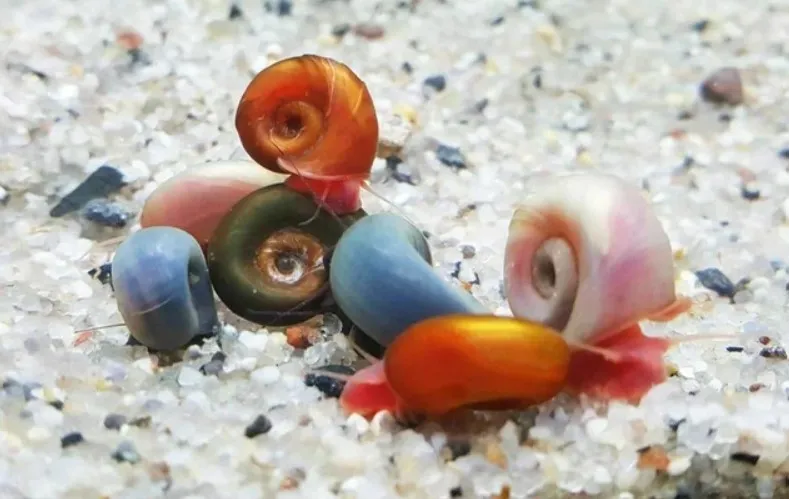
Wild Ramshorn Snail
The first type of ramshorn snail on this list is the wild ramshorn snail. It is the basic version of these species, that is usually found in the wild in southeastern North Carolina.
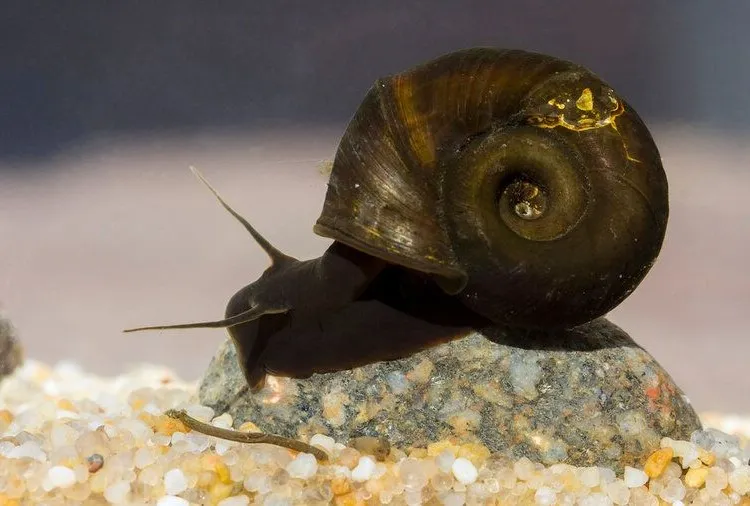
Wild-type ramshorn snails are very basic in terms of appearance. They usually have dark brown shells, and their body is either dark brown or reddish. Wild ramshorns, who have red skin, often lack the pigment melanin in their system, which makes the skin darker, resulting in their body being red in color. This ramshorn coloration is fairly common to come by and can be found in most aquatic stores, that do sell ramshorn snails.
Brown Leopard Ramshorn Snail
A very similar ramshorn variant to the previous one is the brown leopard ramshorn snail. It has a slightly different appearance but is still considered a different variant of the species.
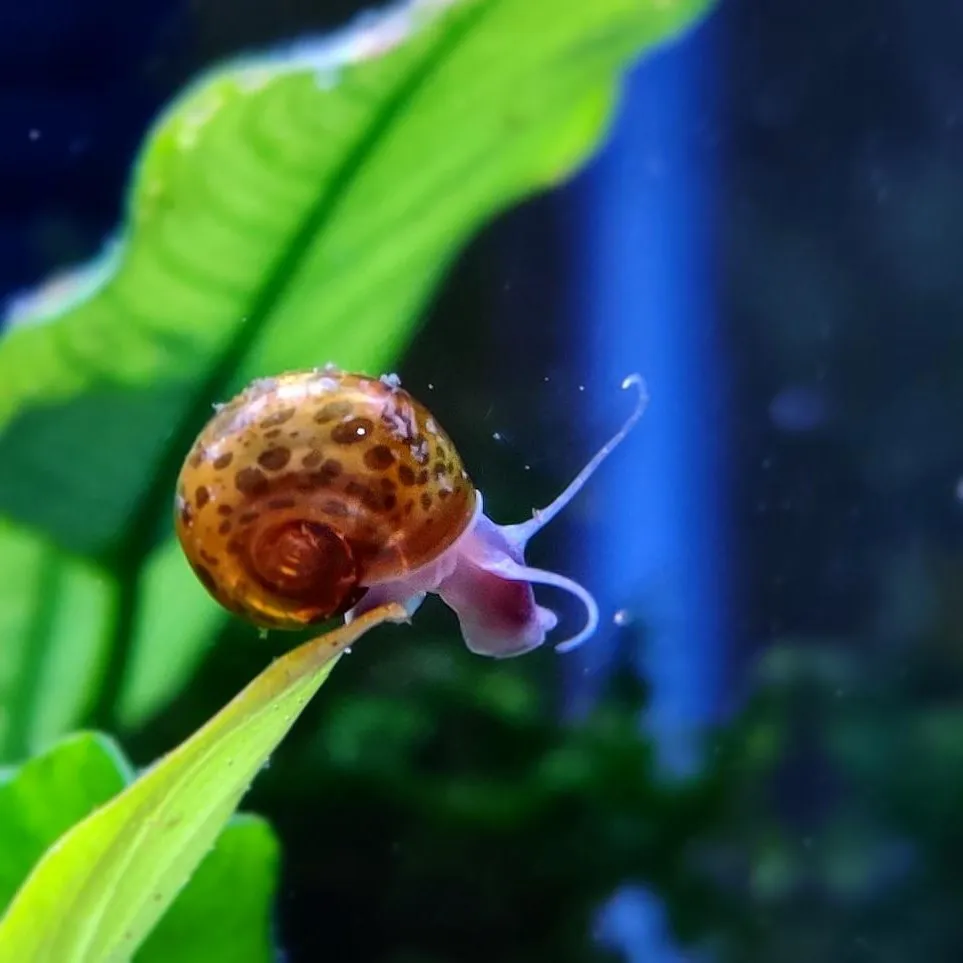
Brown leopard ramshorn snail often has dark brown spots on the brown shell, similar to leopard fur patterns. This type of ramshorn snail is also fairly common, and sometimes even considered the same as the wild type ramshorn snail. If you want the most out of brown leopard ramshorn snails, keep them in lighter aquarium setups, where there would be a contrast between their brown color and plants or white substrate.
Blue Ramshorn Snail
Moving on, a more interesting and beautiful ramshorn snail variant is the blue ramshorn snail. It is probably one of the most favorite variants of this snail amongst aquarium keepers.

Blue ramshorns have a greyish-blue shell, that often seems lighter in heavy lightning. The shell can also be slightly transparent in some spots. The body of the snail is usually dark brown or dark red. These species look absolutely amazing in larger numbers, and both on dark or light substrates.
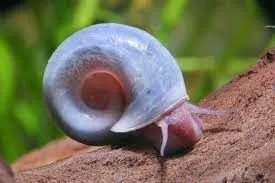
Selectively bred Blue Ramshorn Snails for purchase in the United States. Live arrival guaranteed!

Blue Leopard Ramshorn Snail
Another ramshorn species, that have a leopard pattern on its shell is the blue leopard ramshorn snail. They are extremely similar to the blue ramshorn snail but are slightly more unique in their appearance.

Blue leopard ramshorn snails have dark brown patches on their shell similar to leopards in the wild. This variant also has a shell, that is slightly more transparent, compared to the basic blue ramshorn snail. Other than that, these species are identical to the basic blue ramshorn snails. Blue leopard ramshorn snails also look good in any aquarium setup, since their shell pattern stands out anywhere.
Ivory Ramshorn Snail
Moving on, another more common ramshorn snail type is the ivory ramshorn snail. It is often mistaken for the pink ramshorn, but these two variants are slightly different.

Ivory ramshorn snail has a white milky shell with no spots, and the body of the snail is usually pale pink or light red. These species often look best in darker aquariums, that have dark substrates such as sand or gravel. Ivory ramshorn snails look absolutely amazing while being on the aquarium glass, since you can then see their little mouths and teeth cleaning the glass.
Red Ramshorn Snail
Another fairly common ramshorn variant is the red ramshorn snail. They sometimes look very similar to the wild-type ramshorn snail but are actually slightly different.

Red ramshorn snails usually have a dark red, orange, or brownish shell, and their body is also dark red. These species can sometimes have multiple colors on their shell, some having orange and dark red at the same time. These snails are not that beautiful when it comes to appearance, and usually are discarded by most fish keepers.

Selectively bred Red Ramshorn Snails for purchase in the United States. Live arrival guaranteed!

Red Leopard Ramshorn Snail
Another variant of the red ramshorn snail is the red leopard ramshorn snail. It is another snail species, that have the leopard pattern on their shell.

Similar to red ramshorn snails, the leopard variant has a reddish shell, and the body of the snail is also dark red or brownish. The main difference between both species is that the leopard variant has these brown dots on the shell, and the shell itself is more transparent.
Pink Ramshorn Snail
The pink ramshorn snail is another beautiful type of aquatic ramshorn snail variant. It is fairly common to see these pink ramshorn snails pop up in an aquarium without an invite.

Pink Leopard Ramshorn Snail
Another ramshorn snail variant, that has the leopard pattern is the pink leopard snail. It is essentially the same snail as the pink ramshorn, just with the leopard pattern on the shell.
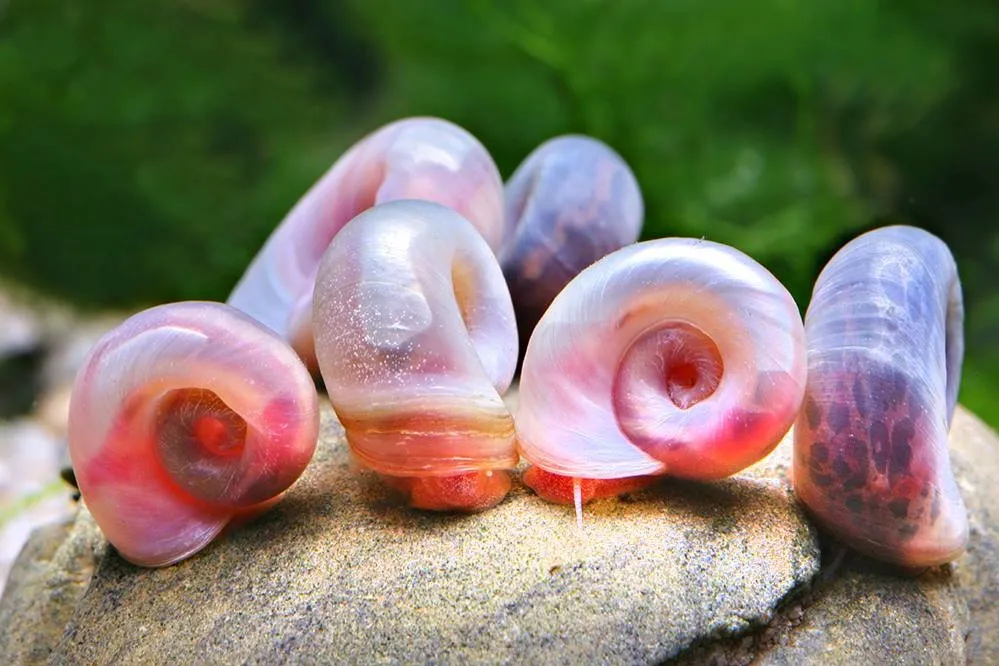
Pink leopard ramshorn snails also have a transparent shell, but the brown spots make them less transparent and separate them from the casual pink ramshorn snails. These species look way better in darker aquarium setups because the pink body and the transparent shell will create a contrast with the darker environment.
Gold Ramshorn Snail
Moving on, a very similar ramshorn snail variant to the famous mystery snail is the gold ramshorn snail. Some beginner fish keepers can easily mistake one snail for the other, but the differences are very noticeable.

The golden ramshorn snail has a bright yellow shell, and the body of the snail is usually golden, but it can also be grayish or slightly brown. The main difference between a gold ramshorn snail and a mystery snail is that mystery snails are way larger, have a different shell shape and their body is usually white.
Jade Ramshorn Snail
The last variant on this list is the jade ramshorn snail. It is one of the most unique ramshorn snail variants and is not that common. It can also sometimes look like the blue ramshorn snail, but it is slightly different.

Jade ramshorn snails have a light green shell, that also can have grayish coloration to it. The body of the snail is usually dark grey or dark red. These species tend to blend in with aquarium vegetation but are extremely visually appealing.
Frequently Asked Questions
Can I Mix Ramshorn Snail Colors?
If you mix different ramshorn snail variants in one aquarium, the offspring of the snails usually look the same as their parents. Having multiple ramshorn snail variations in one aquarium is completely fine and actually more beautiful.
Are Ramshorn Snails Bad?
Ramshorn snails are not bad, they are actually good for your tank. These species eat leftover food, algae, which helps maintain the aquarium. One thing, that makes these snails not wanted by many people, is that they often hitchhike to an aquarium, and breed extensively.
Writer's Thoughts
In my opinion, ramshorn snails are treated badly in this hobby. They are wonderful species, that actually deserve to be considered as a good pet. I love the amount of different coloration you can get with these species, that is why I encourage everyone to keep ramshorn snails, especially beginners.
If you enjoyed reading our article, please feel free to share it with your friends by clicking the social media buttons below:

Thank you for reading my blog post. This website was created with the sole intention of providing quality information regarding fishkeeping. I have been in the fishkeeping hobby for 8 years, and through many trials and errors as well as online research I gathered a lot of information, which I want to give back to the community.

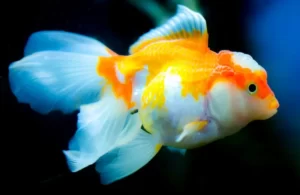
Goldfish With Bump On Head: Possible Causes, Dangers & Treatments
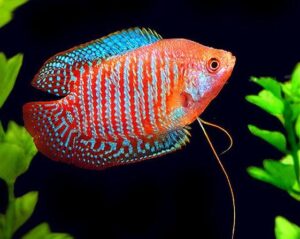

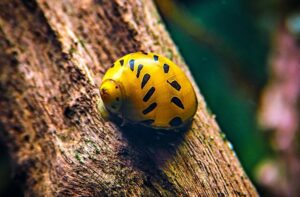
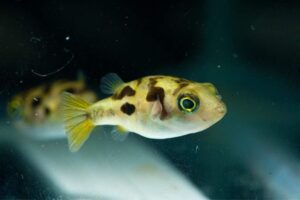
Pea Puffer: Adorable Little Hunter, Everything You Need To Know
